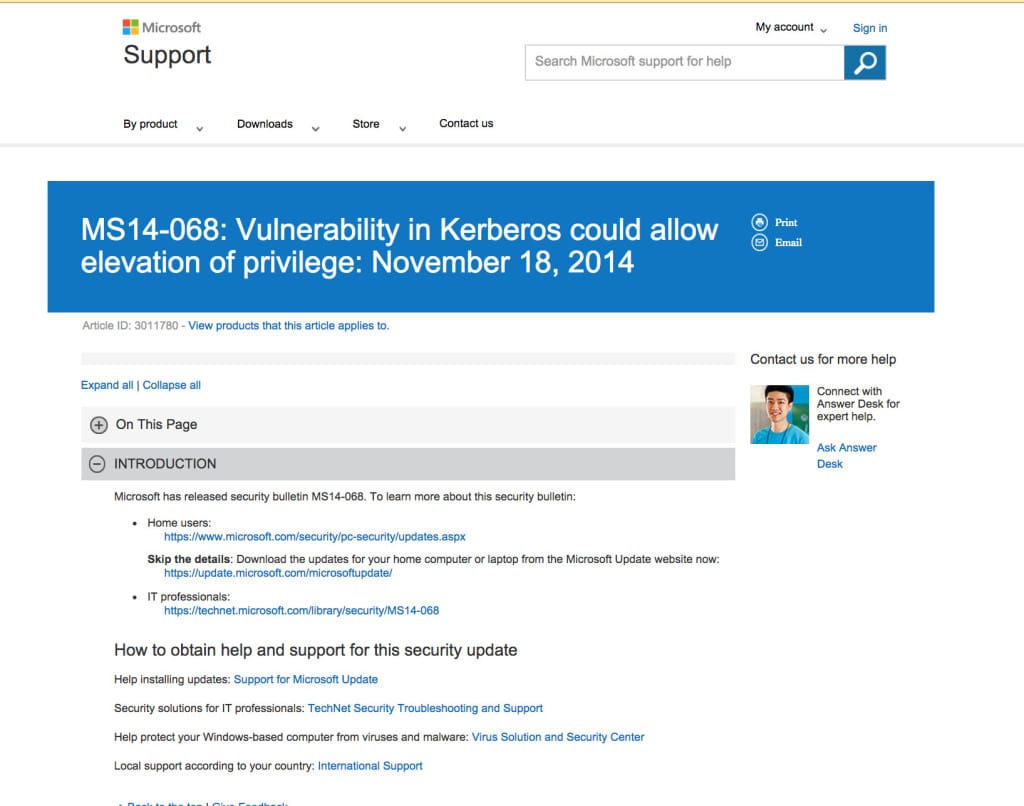A newly discovered vulnerability dubbed ‘Boothole’ compromises the foundation of device security for “virtually all Linux distributions” and some Microsoft’s Windows devices that employ “Secure Boot” feature, according to a new report.
Tag: Windows
Microsoft ‘Bluekeep’ Flaw threatens Medical Devices, IoT
Microsoft’s worm-friendly Bluekeep flaw affects medical devices and other Internet of Things endpoints, security experts are warning.
North Korea’s Lazarus Tied to Cryptojacking Campaign Targeting MacOS
North Korean state-sponsored hacking group Lazarus is believed to be behind a recent crypto jacking attack on several banks with an unexpected twist–the use of a Trojan that tricked a company employee into downloading malware, according to Kaspersky Lab.
Microsoft Issues Critical, Emergency Patch: MS14-068
Microsoft on Tuesday released a critical security patch outside of its normal, monthly software update cycle to fix what it described as a serious, privately reported vulnerability in Microsoft Windows Kerberos Key Distribution Center (KDC). If left unpatched, the security hole could allow an attacker to impersonate any user on a domain, including domain administrators. They could use that access to install programs; view, change or delete data; or create new accounts on any domain-joined system, Microsoft said. The security hole affects a wide range of Windows versions and is rated Critical for all supported editions of Windows Server 2003, Windows Server 2008, Windows Server 2008 R2, Windows Server 2012, and Windows Server 2012 R2, Microsoft said. Kerberos is an encryption technology that is the default authentication method for Windows systems, starting with Windows 2000. The Kerberos Key Distribution Center is a standard network service for issuing temporary session keys to users and computers […]
When The Internet of Things Attacks! Parsing The IoT Botnet Story
I spent most of last week at a conference in Florida going deep on the security of critical infrastructure – you know: the software that runs power plants and manufacturing lines. (More to come on that!) While there, the security firm Proofpoint released a statement saying that it had evidence that a spam botnet was using “Internet of Things” devices. The company said on January 16 that a spam campaign totaling 750,000 malicious emails originated with a botnet made up of “more than 100,000 everyday consumer gadgets” including home networking routers, multi media centers, televisions and at least one refrigerator.” Proofpoint claims it is the “first time the industry has reported actual proof of such a cyber attack involving common appliances.” [Read: “Missing in action at Black Hat: the PC.”] Heady stuff – but is it true? It’s hard to know for sure. As with all these reports, it’s important […]




